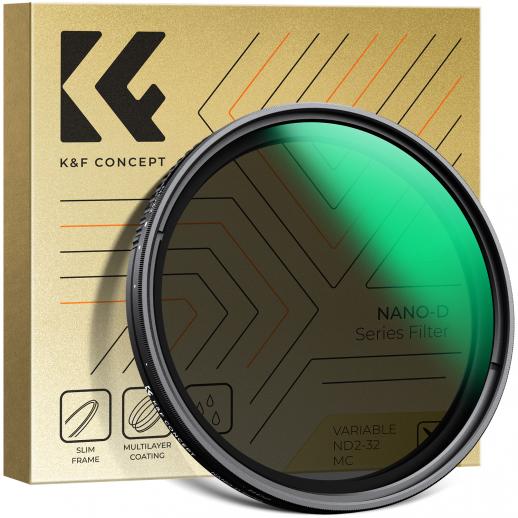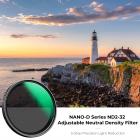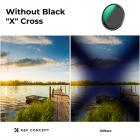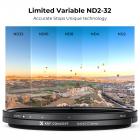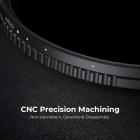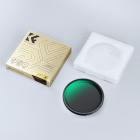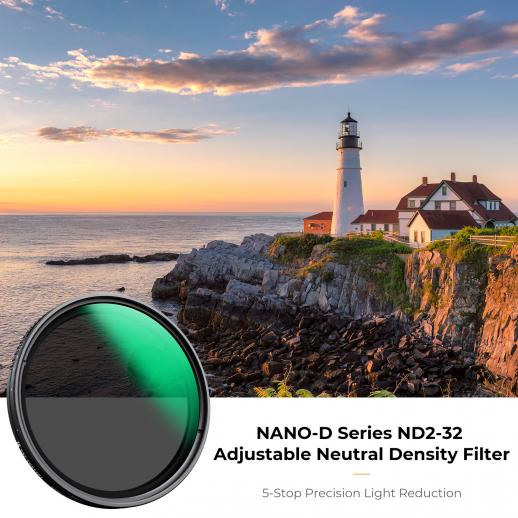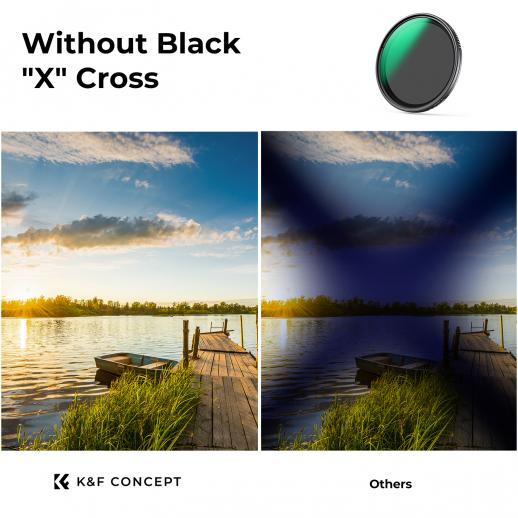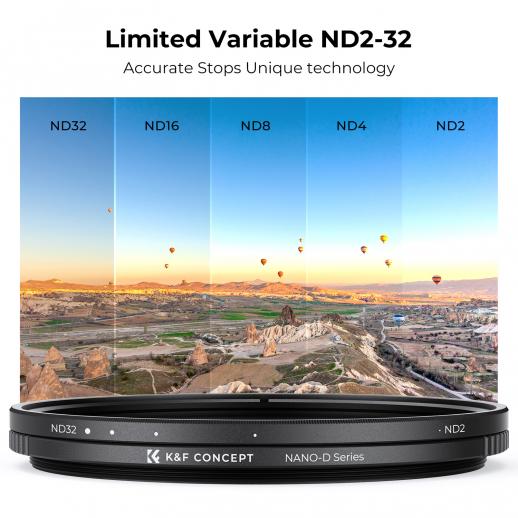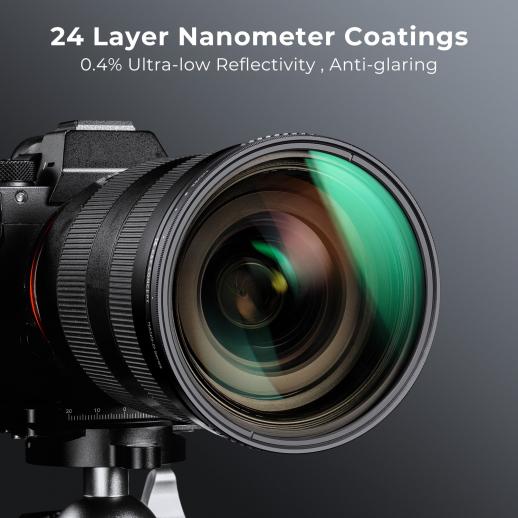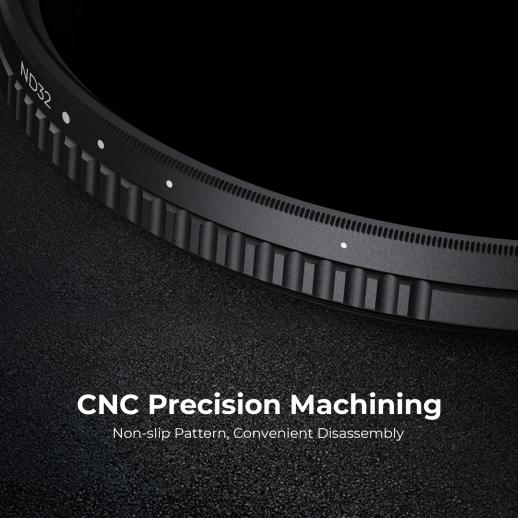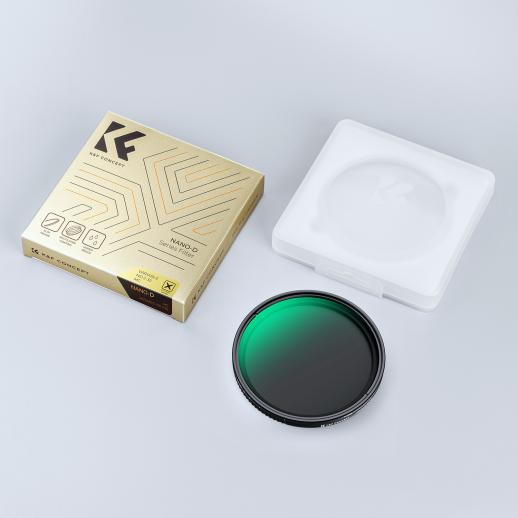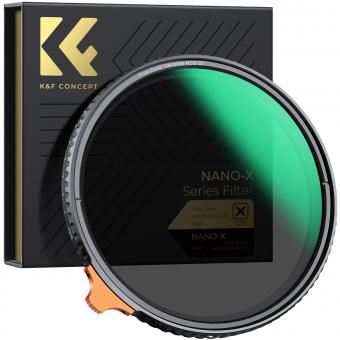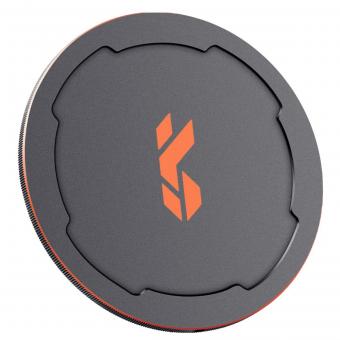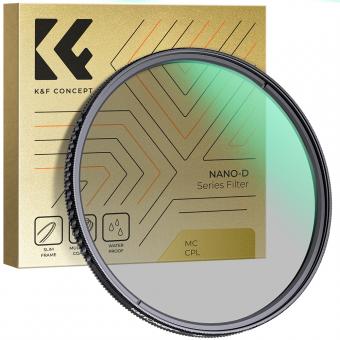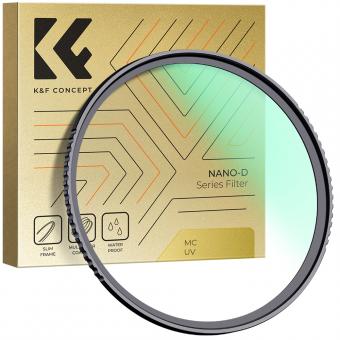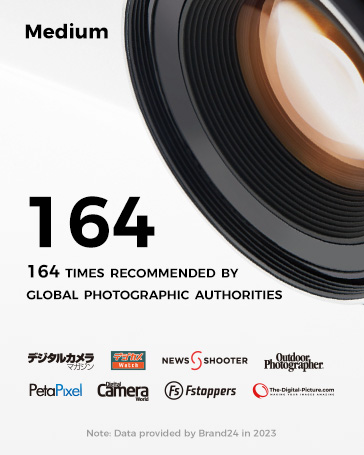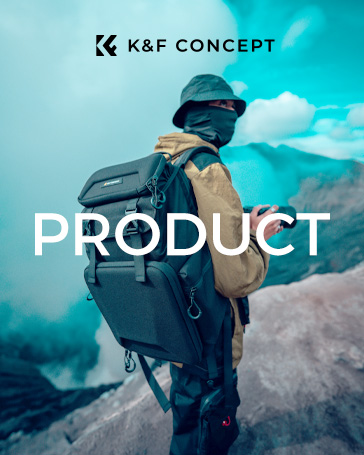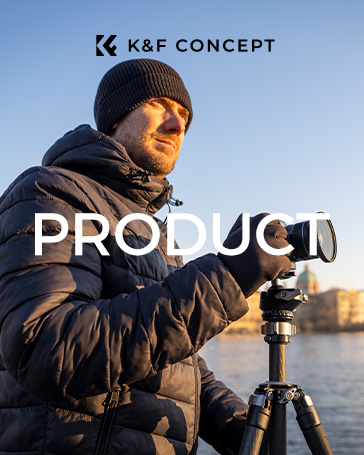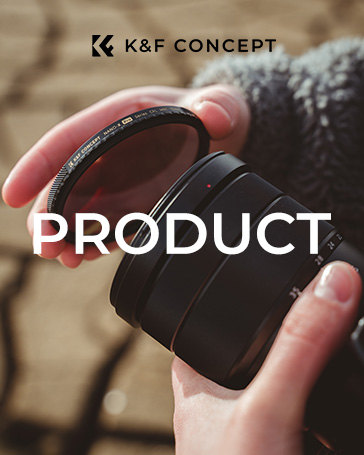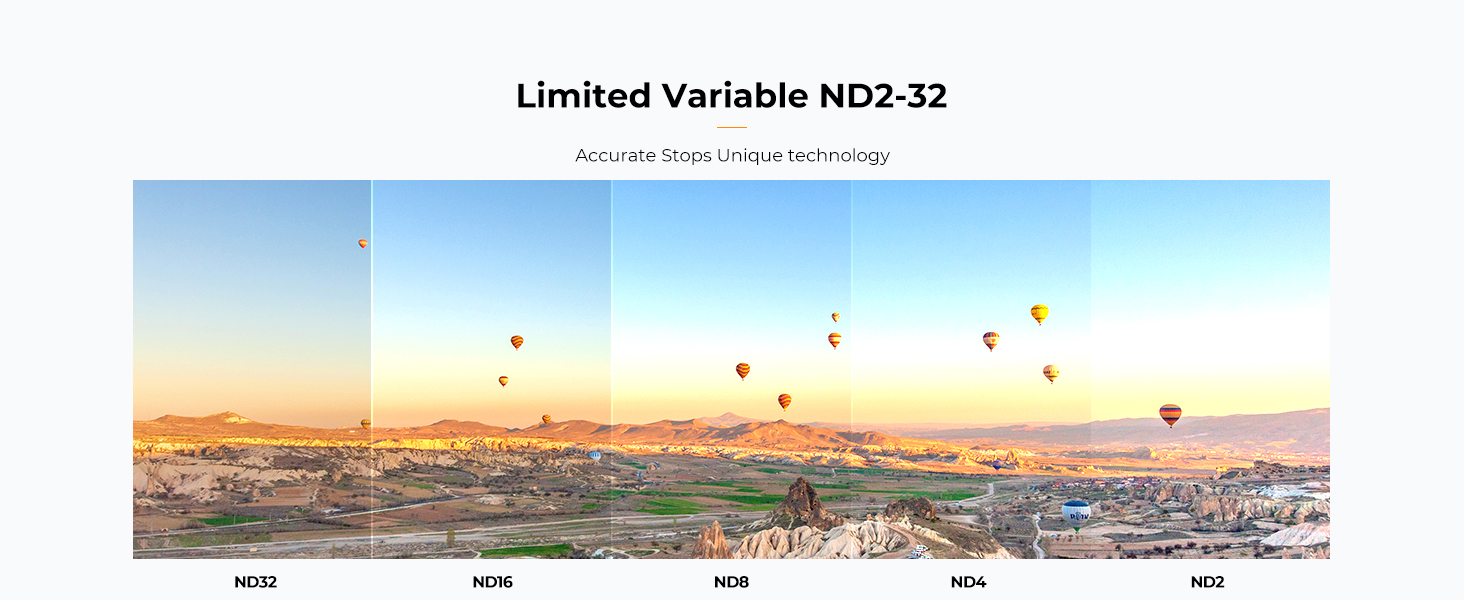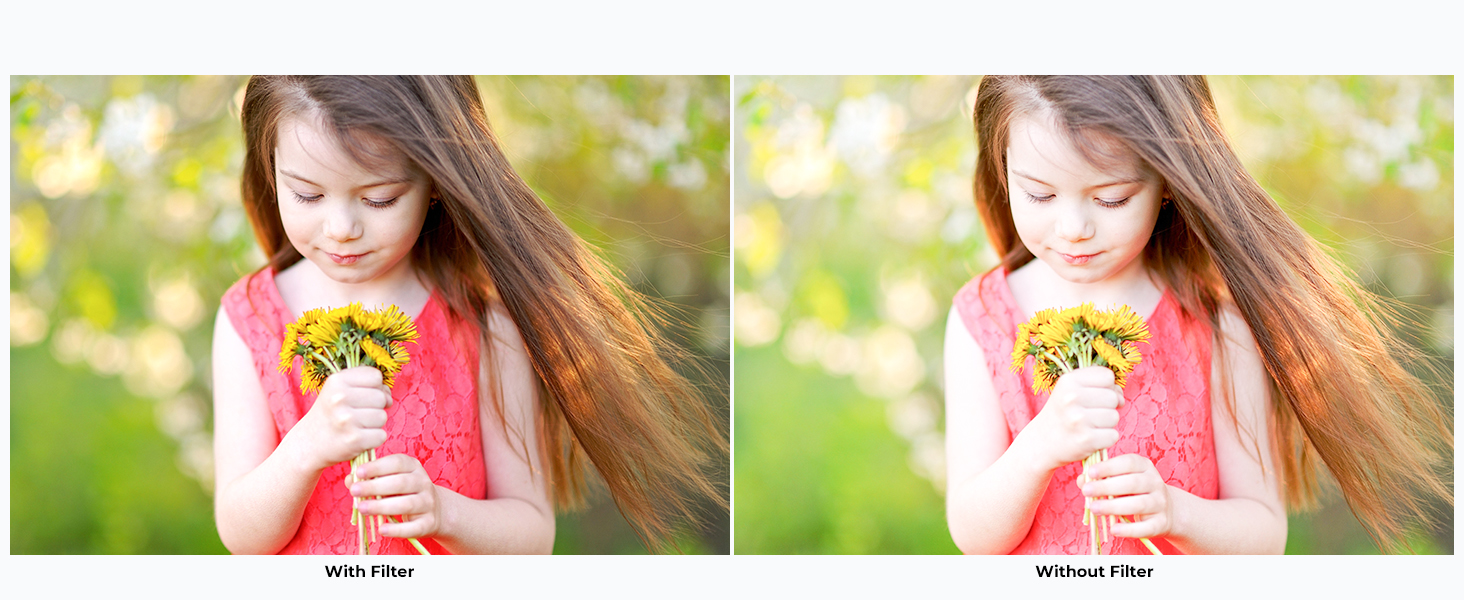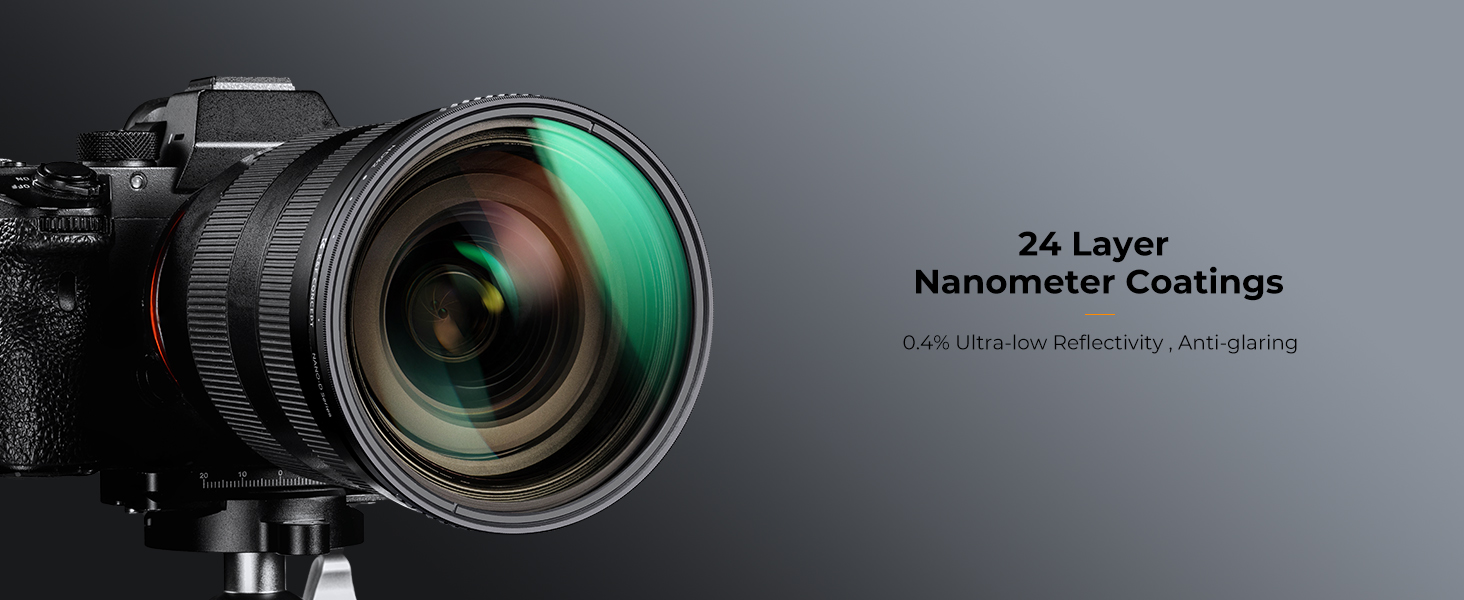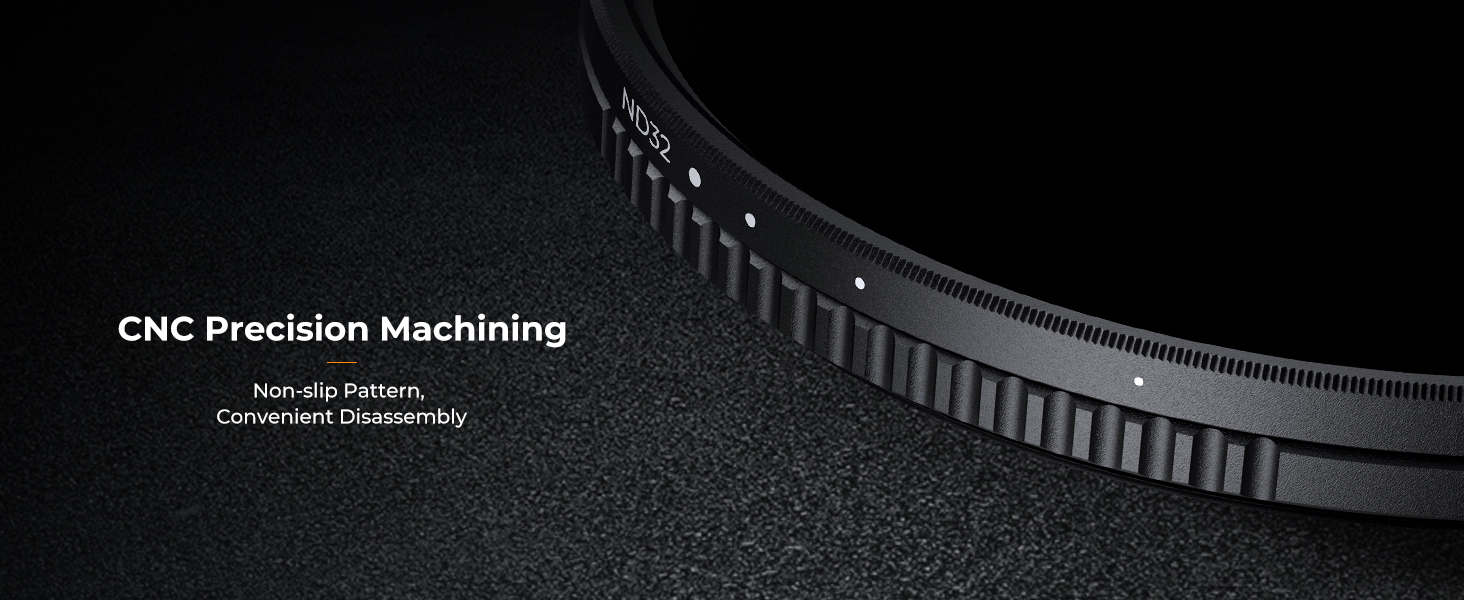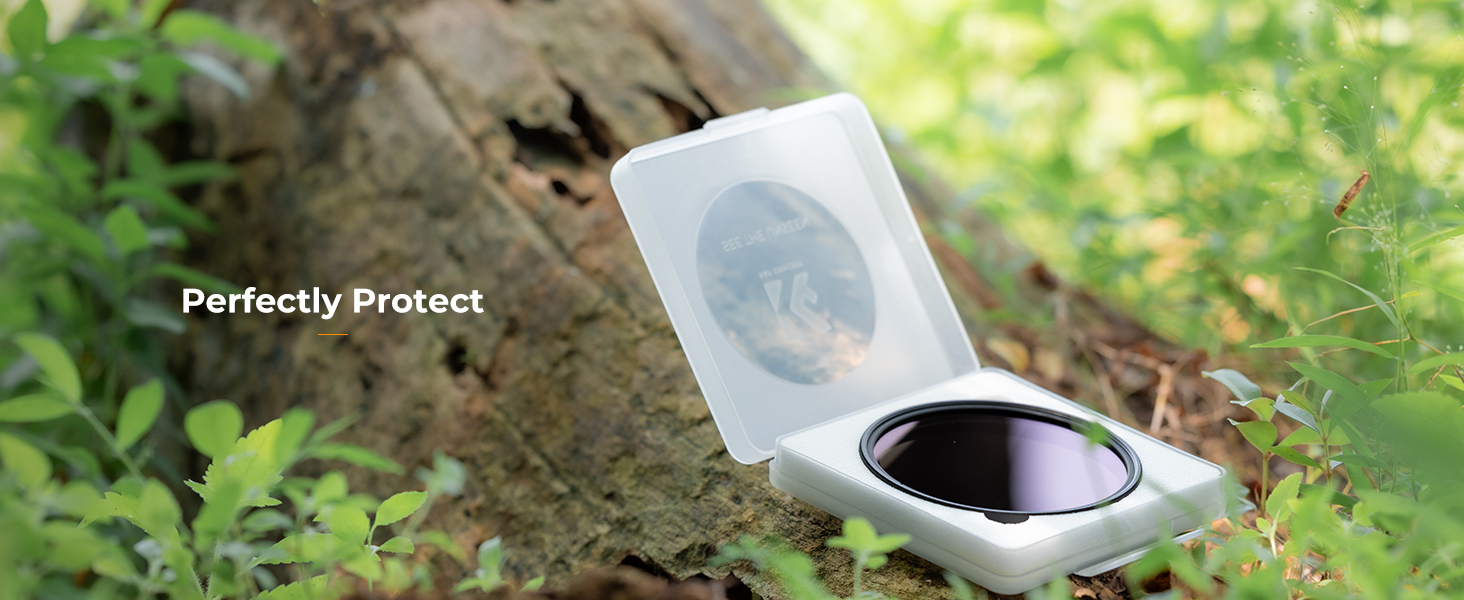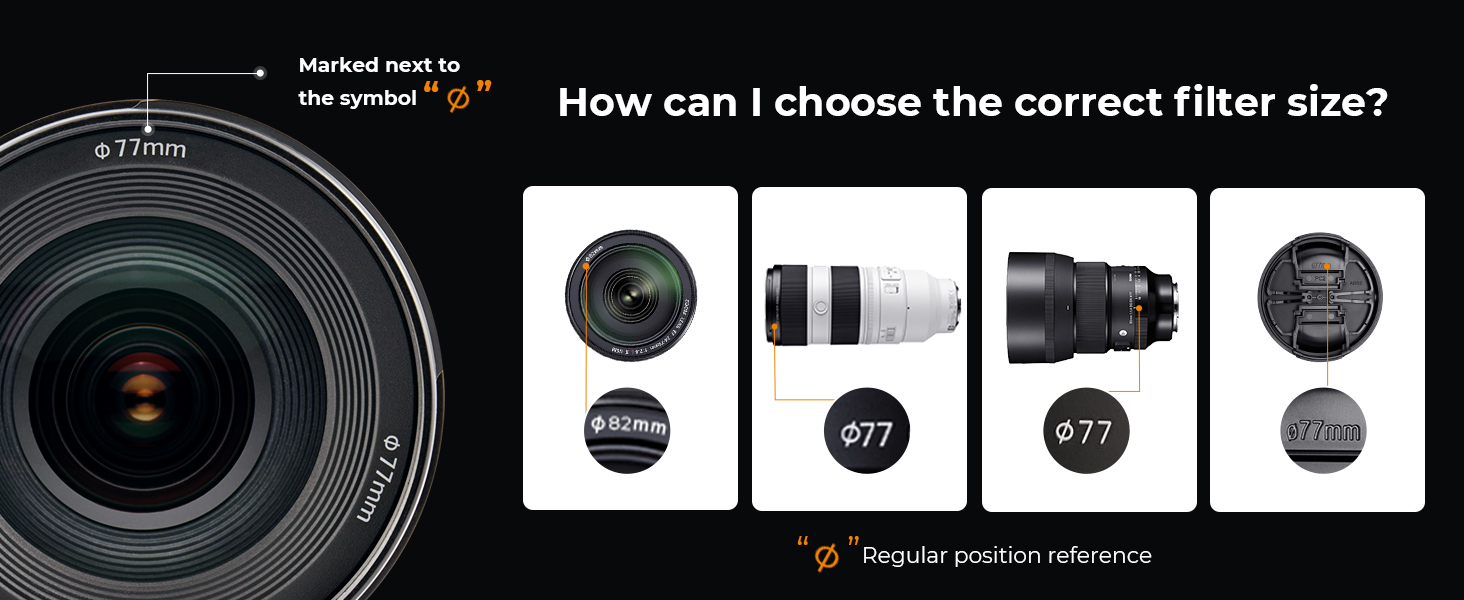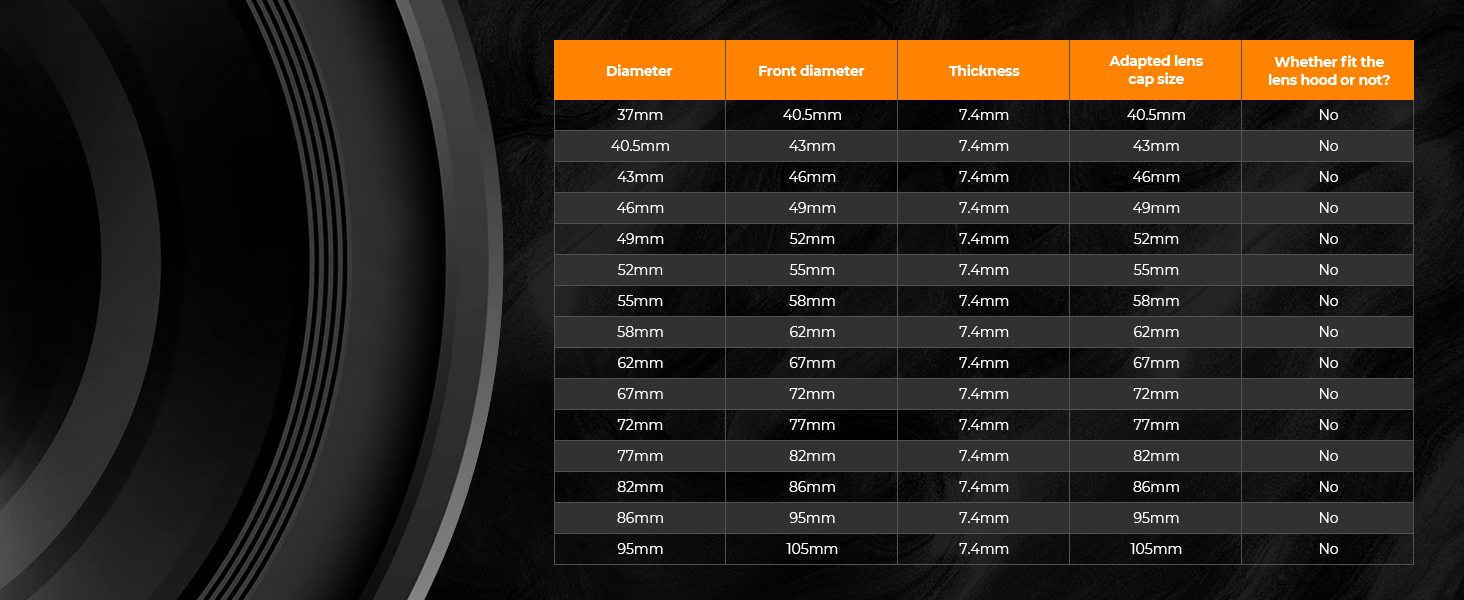49mm Variable ND Filter ND2-ND32 (1-5 Stops) Lens Filter Waterproof Scratch Resistant with 24 Layers of Nano-coating Nano-D Series
In Stock
On Sale
$31.99
Buy 1 Get 12% OFF
Buy 2 Get 15% OFF
Buy 3 Get 16% OFF
Buy 4 Get 18% OFF
Buy 6 Get 20% OFF
Buy 2 Get 15% OFF
Buy 3 Get 16% OFF
Buy 4 Get 18% OFF
Buy 6 Get 20% OFF
Free shipping worldwide
Buy 1 Get 12% OFF
Buy 2 Get 15% OFF
Buy 3 Get 16% OFF
Buy 4 Get 18% OFF
Buy 6 Get 20% OFF
Buy 2 Get 15% OFF
Buy 3 Get 16% OFF
Buy 4 Get 18% OFF
Buy 6 Get 20% OFF
Description
- * 【1-5 Stops ND2-ND32 Variable】K&F Concept ND2-ND32 variable filter is intended for long exposure and motion blur techniques in changing light. Reduces light intake from 1 to 5 stops without affecting color balance, suitable for mid-day or mild sun conditions.
- * 【24 Layers of Nano Coated Optical Glass】This ND2-ND32 variable filter, of K&F Concept Nano-Dazzle series, is made by HD AGC optical glass, a total of 24 multi-layer coatings help repel water and dust, effectively reducing reflection from the filter itself and glare.The surface of the lens is oxidized and sandblasted to effectively prevent stray light from entering and slow down the reflection of the metal surface.
- * 【Ultra-thin Frame】For the K&F Concept ND2-ND32 variable filter designed with an ultra-wide-angle design, the ultra-slim frame is only 7.4mm and the surface is designed with CNC trapezoidal pattern. Helps increase friction over a large area when rotating, making it easy to install/remove lenses and other accessories.
- * 【No Vignetting】Due to different lens types and focal lengths, the filter may appear a black "X" cross, but with continued rotation, the shadow will disappear naturally, which is a natural physical phenomenon caused by the rotation of the adjustable ND lens.
- * 【Choose Right Size】This ND2-ND32 variable filter from K&F Concept is compatible with all 49mm lenses. Please verify your camera's lens thread size before ordering. Your camera's lens thread size will be marked somewhere on the lens barrel or printed underneath your lens cap. This number is always preceded by a "ø" (diameter) symbol.
Unsure your lens size ? check here
Related Products
$31.99
Shipping
Free shipping worldwide
Sale
Buy 1 Get 12% OFF
Buy 2 Get 15% OFF
Buy 3 Get 16% OFF
Buy 4 Get 18% OFF
Buy 6 Get 20% OFF
Buy 2 Get 15% OFF
Buy 3 Get 16% OFF
Buy 4 Get 18% OFF
Buy 6 Get 20% OFF
Accessories
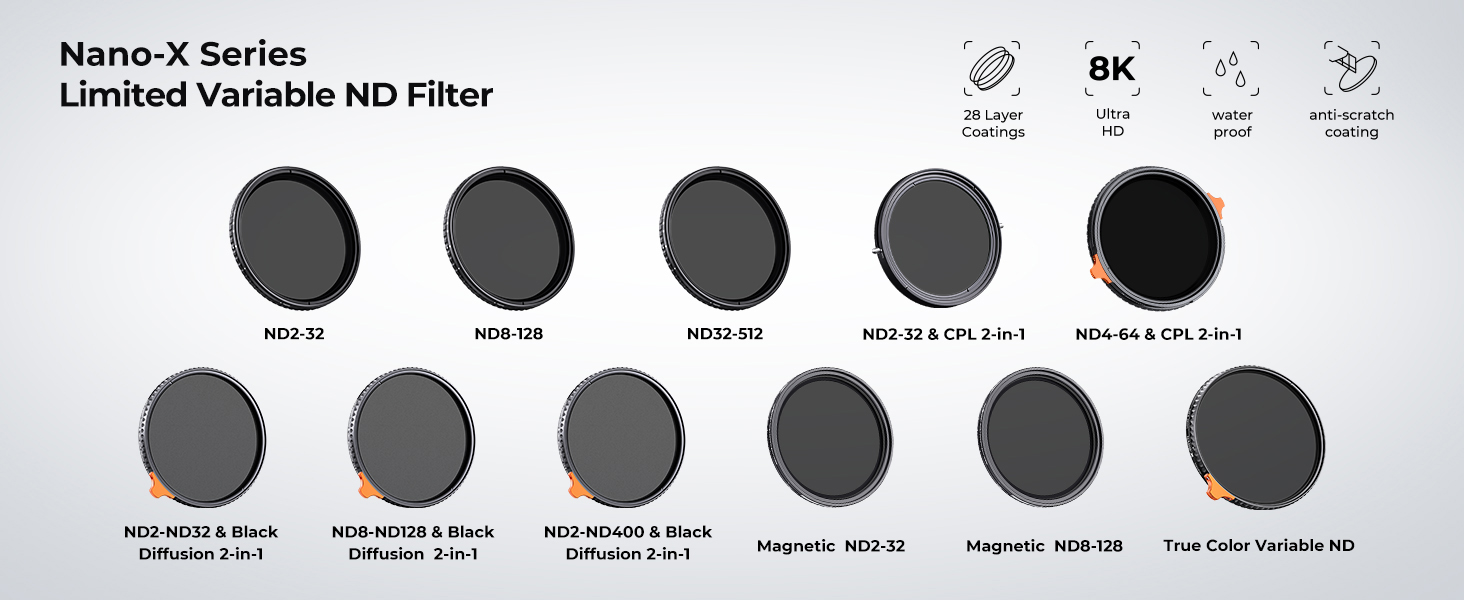
Reviews (20)
- All Reviews
- Image
Verified Purchase
High-Quality filter Allowing for Control in Uncontrollable Lighting Circumstances.
I’ve been a fan of K&F Filters for some time now, and have come to appreciate the consistency and the quality of the brand. The majority of my lenses live their lives with K&F UV protective filters on their front element.
Like many others, as the caliber of mobile phone imagery and videography have improved to levels of near professional quality, I’ve begun to concentrate more energy into taking advantage of those attributes, not to mention the portability.
In hand, the K&F Concepts Variable ND2-32 filter does give the impression of quality. In fact, I own the same K&F variable ND filter in a larger size, 67mm. All modern quality optical glass is coated to reduce reflections with K&F following that convention; the 24 multi-layers of anti-reflection coating the seller asserts are appealing and evident to behold.
A variable ND filter works in a similar manner to a CPL, that is, there are two-rings, one that attaches it to a lens and the other that is turned to control the degree of transmission from more or less light, effectively allowing control of exposure. With that in mind, the K&F filter has a comfortable amount of thickness along with knurled edges on one of the rings that allows for ‘sure-footed,’ precise control while being rotated. K&F has not skimped on material or fabrication.
A ND filter, whether variable or not, is used to reduce the amount of light reaching a light sensitive material. In videography, it is generally to follow the convention of a low ISO and a low shutter speed. In still photography, to allow for the use of a wider aperture in bright light situations. In either case, the benefit of the K&F Concepts variable ND filter is that the transitions between minimum and maximum light reduction are not stepped, but infinitely variable between its 2 - 5 stop range. In other words, one can set their camera to the desired settings, then rotate the light reducing transition ring to achieve the desired exposure. Also, adding a second, fixed ND filter to the lens, for example an ND8, effectively increases the K&F variable ND from its 2 – 5 stop range, to 6 – 10 stops, a range of needed light reduction not uncommon when shooting video in bright sunlight.
There are two conventions for stating the amount of ND a filter provides, Optical Density Number, stated in thirds, with each third being a stop of density, for example .3, .6., .9, etc would be 1, 2 and 3 stops. The other is Filter Factor, the convention used by K&F. The Filter Factor rating is based on the actual amount of light reduction between stops, and is related to the inverse square law of light transmittance. Simply put, for each doubling of the FF number, there is a reduction of one stop of light. So, in the case of the K&F Concept ND2 – 32, you have 0 – 2 = 1 stop, 2 – 4 = 2 stops, 4 – 8 = 3 stops, 8 – 16 = 4 stops and 16 – 32 = 5 stops. And so on.
The K&F Concept Variable ND2 - 32 Filter comes from a trusted manufacturer, is high quality in both fabrication and materials, and serves very well the need for which it's designed. That is, by facilitating the means by which the standard video convention of keeping shutter speed and ISO low, can be followed. It does this by precisely reducing the amount of light in brightly lit scenarios. In other words, it allows some control over otherwise uncontrollable circumstances.
Like many others, as the caliber of mobile phone imagery and videography have improved to levels of near professional quality, I’ve begun to concentrate more energy into taking advantage of those attributes, not to mention the portability.
In hand, the K&F Concepts Variable ND2-32 filter does give the impression of quality. In fact, I own the same K&F variable ND filter in a larger size, 67mm. All modern quality optical glass is coated to reduce reflections with K&F following that convention; the 24 multi-layers of anti-reflection coating the seller asserts are appealing and evident to behold.
A variable ND filter works in a similar manner to a CPL, that is, there are two-rings, one that attaches it to a lens and the other that is turned to control the degree of transmission from more or less light, effectively allowing control of exposure. With that in mind, the K&F filter has a comfortable amount of thickness along with knurled edges on one of the rings that allows for ‘sure-footed,’ precise control while being rotated. K&F has not skimped on material or fabrication.
A ND filter, whether variable or not, is used to reduce the amount of light reaching a light sensitive material. In videography, it is generally to follow the convention of a low ISO and a low shutter speed. In still photography, to allow for the use of a wider aperture in bright light situations. In either case, the benefit of the K&F Concepts variable ND filter is that the transitions between minimum and maximum light reduction are not stepped, but infinitely variable between its 2 - 5 stop range. In other words, one can set their camera to the desired settings, then rotate the light reducing transition ring to achieve the desired exposure. Also, adding a second, fixed ND filter to the lens, for example an ND8, effectively increases the K&F variable ND from its 2 – 5 stop range, to 6 – 10 stops, a range of needed light reduction not uncommon when shooting video in bright sunlight.
There are two conventions for stating the amount of ND a filter provides, Optical Density Number, stated in thirds, with each third being a stop of density, for example .3, .6., .9, etc would be 1, 2 and 3 stops. The other is Filter Factor, the convention used by K&F. The Filter Factor rating is based on the actual amount of light reduction between stops, and is related to the inverse square law of light transmittance. Simply put, for each doubling of the FF number, there is a reduction of one stop of light. So, in the case of the K&F Concept ND2 – 32, you have 0 – 2 = 1 stop, 2 – 4 = 2 stops, 4 – 8 = 3 stops, 8 – 16 = 4 stops and 16 – 32 = 5 stops. And so on.
The K&F Concept Variable ND2 - 32 Filter comes from a trusted manufacturer, is high quality in both fabrication and materials, and serves very well the need for which it's designed. That is, by facilitating the means by which the standard video convention of keeping shutter speed and ISO low, can be followed. It does this by precisely reducing the amount of light in brightly lit scenarios. In other words, it allows some control over otherwise uncontrollable circumstances.
09/11/2024
Verified Purchase
Great Value For The Money
K&F is always my go-to when it comes to filters. This variable ND filter works very well and I'm happy with the performance. As usual, the build quality is excellent and the glass is clean. No issues here!
07/11/2024
Verified Purchase
Versatile filter with a really good design
This filter is really good quality, both the glass and the general manufacturing. I got the 82 mm filter, and had no problems screwing it in. The fixed piece is a few millimeters thick, so it’s easy to grip and has some textured areas that make it easy to screw onto the lens without spinning the moving part.
The outer rotating filter works extremely well. It’s easy to move, but definitely holds in place well, unlike some other variable filters I’ve had in the past.
My favorite feature is that the ND values are marked on the filter at 2, 4, 8, 16, and 32 stops. It’s variable in between those, but super easy to hit a starting point if you know approximately how many stops of light you’re trying to offset.
The K&F Concept filter is a solid build, with some really good features that you don’t see on every variable neutral density filter. It’s a thoughtful design that’s well-executed.
The outer rotating filter works extremely well. It’s easy to move, but definitely holds in place well, unlike some other variable filters I’ve had in the past.
My favorite feature is that the ND values are marked on the filter at 2, 4, 8, 16, and 32 stops. It’s variable in between those, but super easy to hit a starting point if you know approximately how many stops of light you’re trying to offset.
The K&F Concept filter is a solid build, with some really good features that you don’t see on every variable neutral density filter. It’s a thoughtful design that’s well-executed.
06/11/2024
Superb
Superb quality. No issues whatsoever and my images are still pin sharp
02/11/2024
Verified Purchase
Great Filter
Well packaged and work as exptected.
02/11/2024
Verified Purchase
Perfetto
I bought this filter after reading many reviews and I am not disappointed. It is perfect and suitable for all lighting situations. Excellent investment
27/10/2024
Verified Purchase
Excellent optical quality
Good easy to use variable ND filter. Great quality
27/10/2024
Works as described
Works great, no discolouration to image. I love how well this ND Filter performes on my Sigma Lens!
07/09/2024
Verified Purchase
Nice.
Works as expected. Packaged well.
02/09/2024
FAQs
A
Yes, the size of uv filter needs to be one size larger. If the lens filter size is 72mm, the lens cap should be 77mm.
Show More
A
Hi, we checked 50 mm Yongnuo lens filter size is 58mm, you can reconfirm your lens mark as "ø" (diameter) symbol, if the number is 58mm, it would be ok ,thanks.
Show More
A
X pro is the flagship series with best coating and reflectivity. Nano D series is better for photography beginners.
Show More
A
The size of lens cap needs to be one size larger. If the lens filter size is 72mm, the lens cap should be 77mm.
Show More

